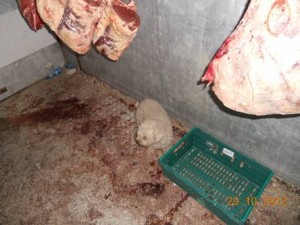Four people have died from a Listeria outbreak linked to prepackaged caramel apples, according to the U.S. Centers for Disease Control and Prevention.
 At least 28 people in 10 states have become sick due to the bacterial infection. Twenty-six have been hospitalized. Five of the patients have died, although one death was not linked to Listeria.
At least 28 people in 10 states have become sick due to the bacterial infection. Twenty-six have been hospitalized. Five of the patients have died, although one death was not linked to Listeria.
Nine of the illnesses were linked to pregnancy, affecting either a pregnant woman or a newborn. The outbreak also has been linked to three cases of invasive meningitis — a dangerous inflammation of the lining of the brain or spinal cord — in healthy children ages 5 to 15.
More than 80% of patients said they ate commercially produced, prepackaged caramel apples before becoming sick, according to the CDC. There is no link to home-made caramel apples or fresh produce. Health officials are working to try to identify a specific brand or type of caramel apple.
For now, however, the CDC advises people to avoid all prepackaged caramel apples.
CDC is collaborating with public health officials in several states and with the U.S. Food and Drug Administration (FDA) to investigate an outbreak of Listeria monocytogenes infections (listeriosis) linked to commercially produced, prepackaged caramel apples. Listeria can cause a serious, life-threatening illness.
The information CDC has at this time indicates that commercially produced, prepackaged caramel apples may be contaminated with Listeria and may be causing this outbreak.
Out of an abundance of caution, CDC recommends that U.S. consumers do not eat any commercially produced, prepackaged caramel apples, including plain caramel apples as well as those containing nuts, sprinkles, chocolate, or other toppings, until more specific guidance can be provided.
Although caramel apples are often a fall seasonal product, contaminated commercially produced, prepackaged caramel apples may still be for sale at grocery stores and other retailers nationwide or may be in consumers’ homes.
This investigation is rapidly evolving. New information will be provided as it becomes available.
As of December 18, 2014, a total of 28 people infected with the outbreak strains of Listeria monocytogenes have been reported from 10 states.
26 ill people have been hospitalized. Among the 26 people hospitalized, five deaths have been reported. Listeriosis contributed to at least four of these deaths.
Nine illnesses were pregnancy-related (occurred in a pregnant woman or her newborn infant).
Three invasive illnesses (meningitis) were among otherwise healthy children aged 5–15 years.
To date, 15 (83%) of the 18 ill people interviewed reported eating commercially produced, prepackaged caramel apples before becoming ill.
At this time, no illnesses related to this outbreak have been linked to apples that are not caramel-coated and not prepackaged or to caramel candy.
Investigators are working quickly to determine specific brands or types of commercially produced, prepackaged caramel apples that may be linked to illnesses and to identify the source of contamination.
This investigation is rapidly evolving, and new information will be provided as it becomes available.
 The owner of the premises Benard Muchan of Back Road, Mullaghbawn was arrested when police visited the shed in October 2012.
The owner of the premises Benard Muchan of Back Road, Mullaghbawn was arrested when police visited the shed in October 2012.








